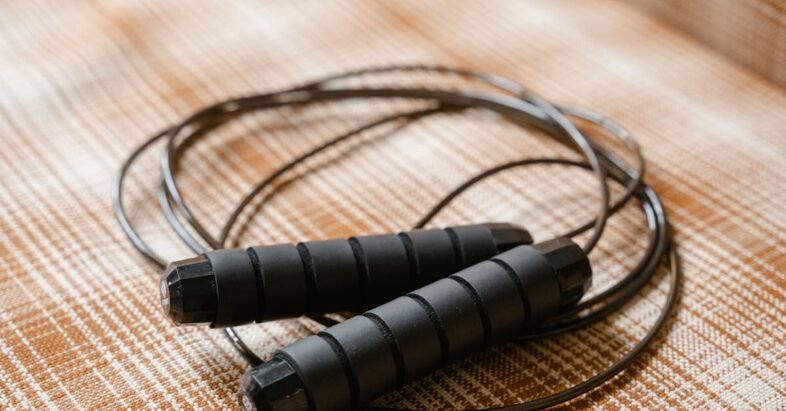Incorporating Strength Training
Including strength training in your weekly routine can significantly aid in weight loss. It not only burns calories during workouts but also enhances muscle mass. An increase in muscle improves resting metabolic rate, meaning your body will burn more calories even at rest. Engaging in exercises like squats, deadlifts, and push-ups can target multiple muscle groups effectively. This comprehensive approach helps maximize calorie expenditure while sculpting your physique.
Setting a goal to incorporate strength training at least three to four times a week is beneficial for optimal results. Each session should focus on different muscle groups to allow recovery while promoting balanced strength development. Utilizing free weights, resistance bands, or bodyweight exercises can yield effective outcomes regardless of access to a gym. Staying consistent with your routine will not only promote overall fitness but also significantly contribute to your weight loss objectives.
This is an essential article for anyone looking to learn more about the topic.
Building Muscle to Boost Metabolism
Muscle is metabolically active tissue, meaning it requires energy even at rest. By increasing your muscle mass through strength training, you can elevate your resting metabolic rate. This means that you will burn more calories throughout the day, even when you are not exercising. Incorporating resistance training exercises, such as weight lifting or bodyweight workouts, into your routine can significantly contribute to muscle development.
Additionally, as you build muscle, you may notice an improvement in your overall body composition. This change not only helps in achieving weight loss goals but also enhances your physical performance. Engaging in a variety of strength training exercises can also help prevent plateaus. This variation keeps your workouts challenging and promotes continuous muscle growth. Prioritizing muscle-building activities is a practical approach to enhancing metabolism over the long term.
Monitoring Portion Sizes
Effective weight management heavily relies on understanding and controlling portion sizes. It’s easy to underestimate how much food is on your plate, leading to unintentional calorie consumption. Familiarizing yourself with standard serving sizes can help in creating a mental picture of appropriate quantities. Measuring cups and food scales can provide an accurate sense of portions, ensuring that you stick to your dietary goals.
Mindful eating practices can further enhance your ability to monitor portion sizes. Slowing down during meals allows for better awareness of hunger and fullness cues. Engaging with your food rather than multitasking can lead to a more satisfying eating experience. Additionally, using smaller plates and bowls can create a visual illusion of abundance, helping to control your portion sizes without feeling deprived.
Strategies for Accurate Portion Control
Portion control is essential for managing calorie intake and achieving weight loss goals. One effective method is to use smaller plates and bowls. This visual trick can create the illusion of a fuller plate, making it easier to feel satisfied with smaller portions. Additionally, measuring out servings with measuring cups or a kitchen scale can help establish a more accurate understanding of what a portion looks like. This practice minimizes the tendency to overestimate serving sizes.
Mindful eating plays a crucial role in portion control. Taking the time to savor each bite can enhance the eating experience and increase feelings of fullness. Focusing on the taste and texture of food helps individuals recognize their body’s hunger and satiety signals. Engaging in this practice can prevent mindless snacking and promote more intentional eating habits. Creating an environment free from distractions during meals can also reinforce this mindful approach, encouraging a greater awareness of portion sizes while eating.
The Impact of Sleep on Weight Loss
Lack of sleep can significantly disrupt the body’s hormonal balance, particularly affecting hormones related to hunger and appetite, such as ghrelin and leptin. Ghrelin, which stimulates appetite, increases while leptin, which signals satiety, decreases when a person is sleep-deprived. This hormonal imbalance often leads to increased cravings and a greater likelihood of overeating, making it difficult to maintain or lose weight.
Quality sleep plays a crucial role in recovery and overall health, influencing how effectively the body can metabolize food and burn fat. During deep sleep, the body focuses on repair and rejuvenation, which can enhance muscle recovery and improve metabolic rates. Poor sleep quality can hinder these processes, resulting in slower metabolism and lower energy levels, further complicating weight loss efforts.
How Sleep Quality Influences Metabolism
Quality sleep plays a crucial role in regulating hormones that control appetite and metabolism. During sleep, the body repairs itself and manages the processes that influence how efficiently it burns calories. Insufficient sleep can lead to hormonal imbalances that increase hunger and cravings, making it harder to maintain a healthy weight. Over time, these changes can slow down metabolic processes, making weight loss more challenging.
Lack of proper rest may also result in decreased energy levels and motivation to engage in physical activities. This can create a cycle of inactivity, further impacting metabolism negatively. Prioritizing sleep hygiene, such as establishing a consistent sleep schedule and creating a restful environment, can significantly improve sleep quality. Enhancements in sleep may lead to more effective weight management and overall health outcomes.
FAQS
Is it safe to lose 10 lbs in a week?
Losing 10 lbs in a week is generally considered an aggressive goal and may not be safe for everyone. It’s important to consult with a healthcare professional before embarking on any significant weight loss plan.
What role does strength training play in weight loss?
Strength training helps build muscle, which can boost your metabolism and promote fat loss. It also improves overall body composition, making it a crucial component of a weight loss strategy.
How can I accurately monitor portion sizes?
You can monitor portion sizes by using measuring cups or a food scale, reading nutrition labels, and familiarizing yourself with standard serving sizes. Keeping a food diary can also help you stay mindful of your portions.
How does sleep quality affect weight loss?
Poor sleep quality can disrupt hormones that regulate appetite and metabolism, making it harder to lose weight. Ensuring you get enough restful sleep can enhance your weight loss efforts.
Are there any quick fixes for losing weight fast?
While there are various “quick fixes” available, most are not sustainable or healthy. A balanced approach that includes diet, exercise, and lifestyle changes is the most effective way to achieve and maintain weight loss.


